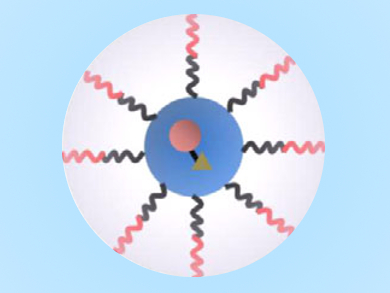Antioxidants that defend the body’s cells against toxins and free radicals are a good thing, but abnormal levels of one type of these natural compounds, thiols, can cause severe health problems.
Gang Han, University of Massachusetts Medical School, Worcester, USA, and collegues have developed specific intracellular nano-sensors that can efficiently detect thiols. The sensors use extremely small nanomicelles,composed of lipid-like polymer molecules that form spheres in liquids, to encapsulate boron dipyrromethane dyes (known as BODIPY). Existing fluorescent sensors also use boron dipyrromethane, but in forms that are not easily water soluble and thus not optimal for living systems.
The team chose to use the distryryl form of BODIPY because of its intense near-infrared fluorescence. A fluorescence quencher, 2,4-dinitrobenzenesulfonyl (DNBS) group was added to the distyryl-BODIPY. In the presence of thiols, this fluorescence quenching group can be removed. The fluorescence “turns on” and is eleven times stronger than when thiols are not present. The nanomicelles can even differentiate between the thiols glutathione and cysteine.
In vitro experiments showed that the nanomicelles had low toxicity regarding cell proliferation. The researchers suggest that these results will be useful for designing other nanomicelles that emit near-infrared radiation, and have potential for in vivo thiol detection.
- BODIPY-Based Nanomicelles as Near-Infrared Fluorescent “Turn-On” Sensors for Biogenic Thiols,
Ling Huang, Ran Duan, Yuanwei Zhang, Zhanjun Li, Jianzhang Zhao, Gang Han,
ChemNanoMat 2016.
DOI: 10.1002/cnma.201600019This article is part of a special issue on nanobiointerfaces in ChemNanoMat.




